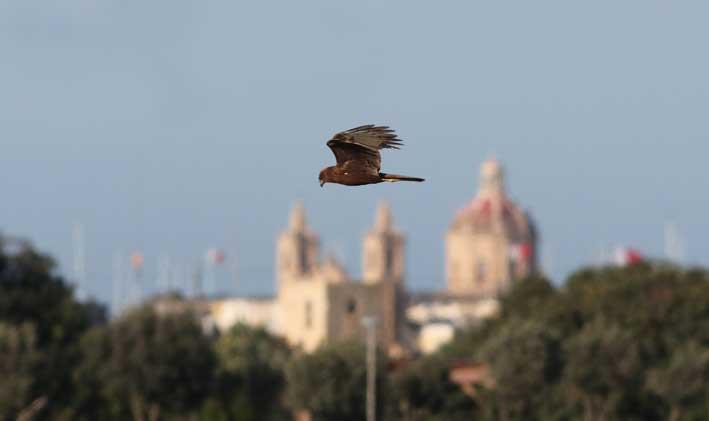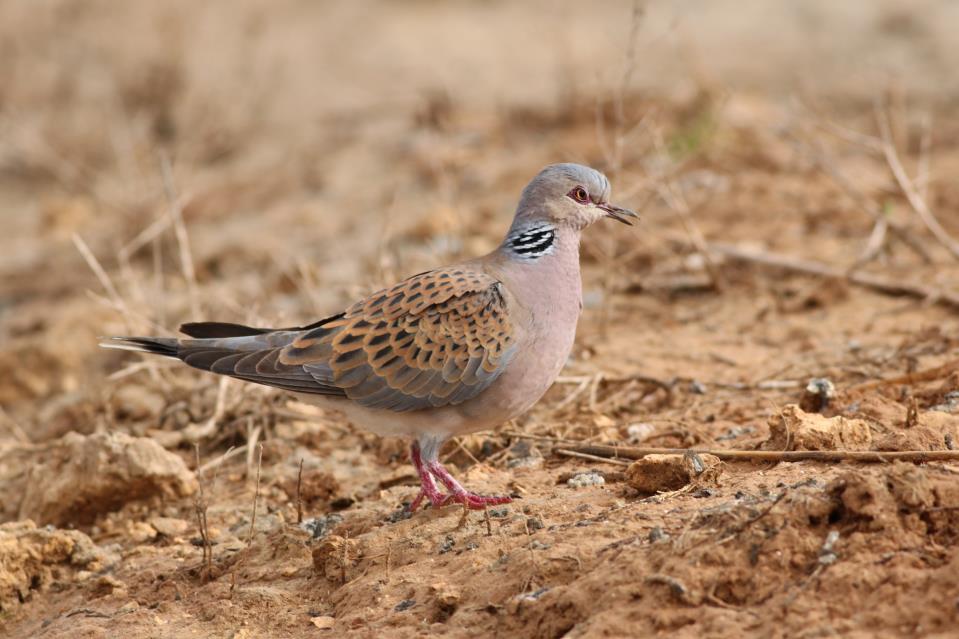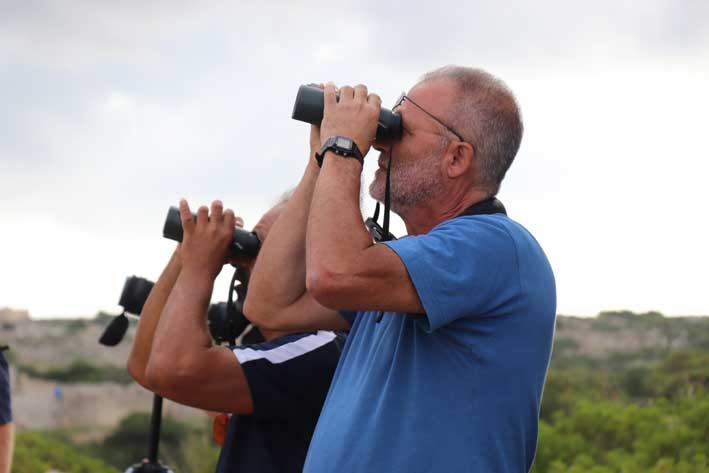Bird migration is that spectacular journey many birds make. Some of these journeys are short - like coming down a mountain to spend winter in the lowlands - and some are seriously, mind-bogglingly long. Whether or not you believe that the pigeon-sized Arctic Tern does a 70,000 km round trip from the Arctic to the Antarctic and back in one year, the facts are there. And undisputed.
Of course, birds don't take on these feats of endurance for fun, nor even to wow us ground-bound humans. They do it to survive, basically to escape bad weather and to look for milder climes where food is plentiful. It's a good strategy for survival, but the journeys are fraught with dangers, not least some formidable geography - like a sea. Most birds can't swim so they avoid lengthy sea crossings. Many find a route strewn with islands along the way where they can stop for the night.
And that's where Malta comes in. Birds crossing between Europe and Africa find places like Malta a convenient motel where to crash for the night, so to speak. Happily for us nature-lovers, Malta is on what we call a migration flyway. And that's the reason no less than 400 species of birds have so far been recorded in this arid, overpopulated rock.
So no, it's not just sparrows. Far from it. But where do I find all these birds?

A Marsh Harrier at the airport. Photo: Aron Tanti
Where
Malta is so small that migrating birds can turn up anywhere. I've been stuck fuming in the Marsa gridlock, looked up, and wow - a line of 80 Grey Herons sailing languidly overhead! I've been in class, looked out of the window and wow - two Black Kites circling over the netball court! And it's not just birds flying. There are places where you stand a better chance of spotting birds on the ground (or in the water). Tired birds can really turn up anywhere, but they will still look for suitable habitats if they can find it. Many birds love trees: great places where to hide and rest unseen. Places like Buskett are therefore a natural magnet for woodland species like Honey-buzzards, Night Herons, Nightjars, turtle-doves, and thrushes, warblers, flycatchers and finches by the score. Although still young, Foresta 2000 - BirdLife Malta's reforestation project - is fast coming into its own: the low canopy already attracts hobbies, cuckoos and Marsh Harriers to roost; and Robins and starlings to gorge on the many berry-bearing shrubs planted there.
Not all birds favour trees. Some, like chats, wheaters, larks, pipits, dotterel, Stone Curlew and Short-eared Owl, prefer open country. For a swipe at these, head for rocky places like Fawwara, Majjistral, Ras il-Pellegrin and Ta' Ċenċ. Such spots are also cliffy, which is the haunt of the Blue Rock-thrush or, if you're really lucky, Peregrine Falcon or Eleonora's Falcon.
Then there are birds that love to stay in the water or close by it. Coastal places are best for these, so bays and creeks can turn up gulls, grebes and the occasional cormorant. The coast is also where BirdLife's three wetland reserves are sited: Għadira, Simar and Salina (currently closed due to Covid-19 restrictions). While the deeper pools attract the grebes, the gulls and the ducks, the shores and shallows can produce anything from stints, sandpipers, shanks and rails to bigger fare like egrets, herons, spoonbills and flamingos. BirdLife's sites also have the added advantage of having birdwatching hides - purpose-built huts where you sit and observe birds in relative shelter and comfort. BirdLife Malta's nature reserves are also regularly 'worked' by several birders, an added boon as these people are always willing to point out what's around.

European Turtle-dove. Photo by Aron Tanti
When
You can go birdwatching every day of the year and something will always turn up. But by far the bonanza periods are spring and autumn. Why? Because that's the time migration happens, so that's when you'll get most variety and most surprises. In spring, birds are travelling north from their wintering grounds to their breeding grounds, and that's precisely what tens of millions of them are doing right now. They'll be crossing from North Africa - that's more than 300 km of open sea to the nearest land - and heading for Europe. Many will be tired and only too happy to drop in for a few hours' kip, and maybe a snack. March, April and May are the best months to go roaming and spotting your species. In autumn, birds clock the same journey in reverse, giving us a more-or-less repeat performance of the spring rush.
The best time of day is usually as early as you can make it. Birds try to avoid the early afternoon heat as much as we do, so many tend to keep to the shade in the hours of brightest sunshine. Many birds are in fact up even before sunrise - as are many hardened birders. But it's all right to start later.

Birdwatching at Buskett. Photo by BirdLife Malta
How
What do you need to enjoy the spectacle of migration? Well, your eyes and ears should suffice really, but as many birds are small, fast, shy and restless, it's always a good idea to aid your vision with a pair of binoculars.
Binoculars are the birdwatcher's single most important piece of equipment. Good quality models are nowadays available that don't cost a limb - €100 should get you a decent pair. There are even cheaper bargains, just don't go for the toy you shook out of your cereal packet.
Make sure you have suitable clothing: not too little, not too much. I personally wear layers that I can peel off or put on as required. Birds are shy, jumpy creatures, so leave that psychedelic jacket with sequins at home. Go for greens, greys and browns. Avoid swishy fabric that gives your presence away the moment you swing your arm or take a step. And wear sturdy, comfy no-nonsense footwear, especially if you're going off the beaten track.
That's about it really. Don't expect to log all 400 species, of course - many of them are mega rarities that may only have been seen once since records began. So, go easy on the expectations front. What ultimately makes the experience is that you are out there taking part in one of the great spectacles of nature: bird migration. Good luck!
Note about the #onthemove campaign
Following last year's success with the autumn migration campaign, this year BirdLife Malta has launched its second #onthemove campaign to showcase the beauty of the bird migration spectacle, this time in spring. The campaign aims to inspire people to enjoy, care and protect Malta's birds during the spring migration. Visit https://birdlifemalta.org/onthemove to learn more about the campaign.